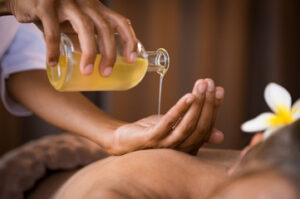A well-installed and maintained septic system quietly manages household wastewater without contributing to local environmental degradation. However, if the system is not serviced regularly, problems can occur.

Foul odors, soggy lawns and slow draining sinks and toilets are signs of trouble. Septic tank cleaning, pumping and inspection are key services that help you avoid costly repairs and extend the lifespan of your system. Contact The Septic Guys for professional help.
Septic tank cleaning services revolve around breaking down and removing the inevitable buildup of solid waste that accumulates inside a septic tank over time. This involves using specialized agitation equipment to dislodge and separate the solid waste from liquid effluent and scum layers. Once this is done, the solid remnants can then be safely and cleanly vacuumed out of the septic system.
Tank cleaning should take place at least once every three to five years. It’s a great opportunity to also do some minor preventive maintenance. During this service, a professional septic technician can inspect the tank’s internal components and piping for any signs of serious damage or wear. This includes examining the lid for cracks or other problems, checking the baffles for wear, and making sure the drain field is free of obstructions and not over-loaded.
Keeping up with tank cleaning is the best way to protect your septic system from expensive repairs and extend its lifespan. Some things you can do to help include conserving water, fixing dripping faucets and toilets and using septic-safe products. You should also avoid pouring cigarette butts, coffee grounds, fats and oils, chemical drain openers, paints and solvents, pesticides, petroleum-based products, or any other toxic substances down your septic system drains.
As far as septic system pumping goes, it’s an essential maintenance measure that’s designed to clear out decades worth of accumulated sludge and scum. This essentially resets the entire system by flushing out the old residue and restoring the full liquid waste capacity.
Pumping is a more involved process than cleaning and relies on much larger and more powerful vacuum pump trucks. These trucks have long hose runs that connect directly to the septic tank’s opening and pump out all of the remaining liquid waste. Once this is complete, the crew will then use a high-powered nozzle to wash away any residual debris left behind in the tank itself.
While it may seem like the answer to this question is a simple one, there is no single “one-size-fits-all” solution. Many factors play into how often your septic tank and drain field need to be pumped and cleaned, including your household’s wastewater needs, the age of your septic system, and local environmental conditions. A knowledgeable septic service provider can assess your unique situation and recommend an appropriate schedule for both cleaning and pumping services.
Pumping
All of the waste that flows through your home finds its way to your septic tank where solids are separated from liquids. Liquids (or effluent) exit the septic tank and enter the drain field through the inlet and outlet baffles. Over time, the tank may need to be pumped in order to remove the excess solids that accumulate.
When your septic system is working properly, you should not experience problems such as slow draining and clogged toilets. However, if you notice these signs of a septic system emergency, it’s important to act quickly. Contacting your septic provider for an emergency service visit can help prevent the situation from getting worse and prevent costly damage to your home or property.
Foul Odors
Sewage waste is a health hazard and produces foul odors when it overflows from your septic tank or into your home. If you notice these odors, it could be a sign that the tank is nearing capacity and needs to be pumped sooner rather than later.
Standing Water
If you notice that your yard above the septic tank or drain field is wetter than the rest of the yard, this is often a sign that there is sewage in the groundwater. The nitrogen in septic effluent is a great fertilizer for your grass, so you’ll often find lush, green patches of lawn where the sewage has deposited. However, if this ponding is concentrated over your drainfield or septic tank, it may be a sign that the leach field is failing and requires repair.
To keep your septic system healthy and in top condition, address leaks and drips promptly and reduce water usage. Also, remember that your septic system is not a garbage can. Items such as dental floss, tampons, paper towels and cigarette butts should be disposed of in the trash, not the drainfield. In addition, avoid planting trees and gardens over the septic tank or drainfield area and never drive or park vehicles over it. These activities can cause damage to the pipes and create a safety hazard for your family and neighbors.
Inspection
Septic inspections allow homeowners to monitor their septic system and make sure that it’s working properly. When performed regularly, these inspections can help catch issues before they worsen and prevent costly repairs or health hazards. A septic inspector can examine a home’s septic tank, drain field, and other components to look for signs of malfunction or wear and tear.
A septic inspection starts with a visual examination of the exterior and interior of a tank and pipes. During this process, the inspector checks for surface signs of trouble like ponding water and effluent seepage. Then they flush toilets and run faucets to ensure that all water is properly draining. The septic inspector may also check the drain field to ensure that it’s absorbing wastewater and not becoming clogged.
The next step in a septic inspection is to access the septic tank itself. Using high-tech tools, they can examine the tank’s condition and structure to check for cracks or other damage. They can also evaluate the condition of the inlet and outlet baffles, and determine the operating liquid level of the septic tank. A camera can be fed through the outlet baffle to evaluate the condition of the effluent pipe and distribution box.
After completing the visual part of the septic inspection, a technician will contact the local health department to get a complete history of the septic system’s repair and maintenance records. They can then use the information to create a timeline for future maintenance and recommend any necessary upgrades.
A septic system is an integral part of a home’s plumbing and can affect the quality of water that comes out of your taps. In order to keep your septic system in tip-top shape, you should follow these tips:
Repair
We can help repair septic system components and the drain field. We’ll inspect the entire system, including the tank and all pipes, to ensure everything is working correctly and there are no leaks. Whether your septic system needs repairs or an entirely new installation, we have the skills and tools to get it done right the first time.
When your septic system isn’t functioning properly, it can lead to expensive plumbing repairs or even sewage backups into your home. Regular maintenance services will reduce the risk of these problems by keeping your septic tank and septic system clean and reducing the amount of waste that goes into it.
Septic tank repair is a common part of septic service, as the septic tanks themselves can break down over time due to wear and tear. Leaks from a broken or cracked septic tank can be extremely dangerous and must be addressed immediately, as they can cause environmental damage as well as health hazards for homeowners. Fortunately, the majority of septic tank repairs are relatively simple and can be completed quickly by experienced professionals.
A faulty septic system can also affect the surrounding environment, contaminating groundwater and polluting soil. Septic system installations and repairs should always be performed by qualified septic technicians to prevent these issues.
Your septic system is responsible for the disposal of all of your home’s wastewater, so it’s important that it gets regular professional maintenance. The most common septic system maintenance includes tank cleaning, inspections, and drainfield maintenance.
Septic tank cleaning involves removing the sludge and scum from your septic system to reduce the risk of clogs, odors, and other issues. Septic tank cleaning is typically performed by trained professionals using a special truck and vacuum equipment.
Inspecting your septic tank will help you determine the sludge levels and any potential problems with your septic system. These inspections can identify signs like a cracked tank, which can usually be repaired.
The drain field is a critical component of your septic system, as it’s where the wastewater that was pumped out of your septic tank flows into the soil. Problems with your septic system’s drain field can cause standing water, foul odors, and even pest infestation. In most cases, septic system professionals will be able to repair these problems by installing new filters or regrading the drain field.



